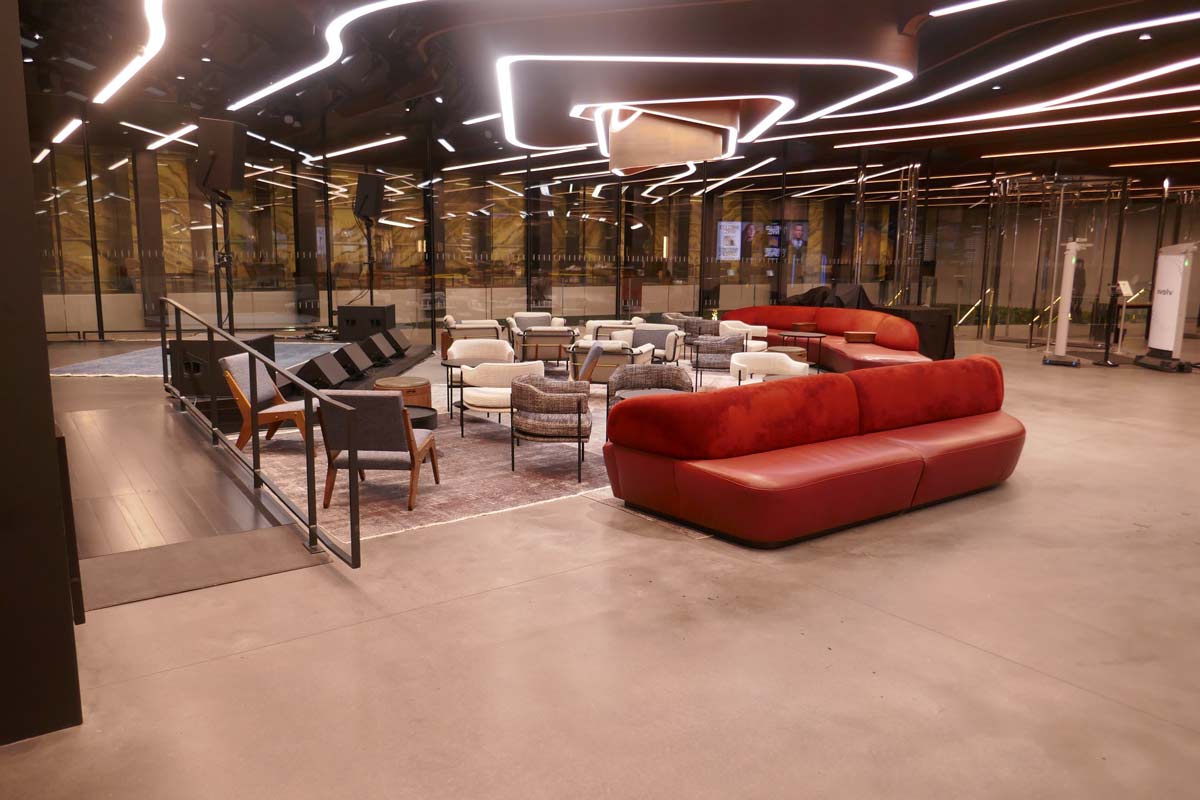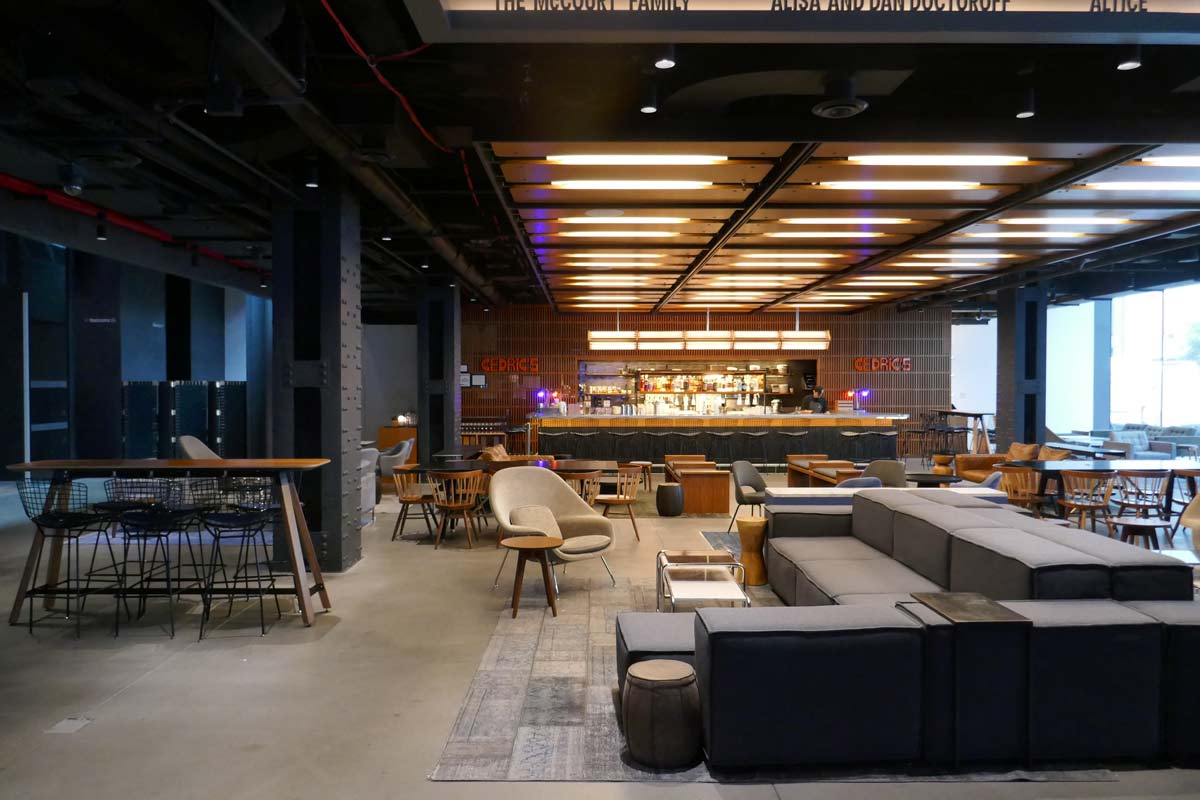What Happens in the Lobby
Lobbies require many features to meet the core mission of serving the audience and potentially as a source of revenue. Some organizations want to activate their lobbies during the day, and often it’s important the public can see something exciting and creative is happening day and night. Visible activities can help keep the theatre looking lively during the day; this is important for theatres that are in trafficked areas during all times of day, for both pedestrians and motorists. Dinners and other functions can occur in the lobby. Not to mention the more mundane tasks of selling tickets and other audience services. Today’s lobby is often a versatile space
So, a brief list of the things that may happen or be needed in the lobby, in no particular order:
- Security Screening
- Sitting / lounging space – a “third place”
- Wi-Fi access
- Receptions
- Storage
- A place to feel welcome.
- First experience tone – a good public impression
- Daytime activities
- Promote the season.
- Box Office
- Concessions (together with Box Office? – a choice)
- Food and drink to draw the public during the day.
- Catering support space
- Engage the public when not a show day.
- Accessibility
- Human contact – customer service.
- Careful circulation / clear wayfinding (Intuitive helps too!)
- Medical assistance
- Multiple lobbies to accommodate meetings and food.
- Loading for cars (audiences and things coming from outside).
- Display or gallery
- Gift shop (local, or show merchandise)
- Strong sense of the place
- Good connection – artist and patrons using the same lobby door (desired by some).
- A space that is revenue generating by itself.
- Support for events.
- Technical support for all the above (i.e. production lighting, sound, rigging, video and the like.)
- Signage that is easier for the 20% of dyslexics in the population.
- Coat check
- Donor recognition
- Accessible toilets at all times of the day.
- Place for a small combo to set up.
- Audio for public address, including connections for user audio.
- Latecomer video
- Another area to secure in the event of a public safety situation.
- Power for all the above, well distributed all over the lobby.
- Janitor’s closet
- More storage

Comfortable seating near a small stage provide options for different events. Security screening equipment is seen to the right. Perelman Performing Arts Center, NYC. Photo by author.

Mobile stations for customer service or bar use are a flexible way to provide audience service. Photo by author.
Many theatres and stages strive for flexibility in order to meet the many needs of an operator. The lobby can have similar needs for flexibility and ways to inform, entertain, and engage the audience. This is one more topic for discussion during initial programming of a performing arts building.
Thanks to the many members of ASTC who contributed their points to this article. This was compiled from a lightning “round the table” session brainstorm during our Forum in NYC, edited for clarity.
Edited By Paul Sanow, ASTC
Disclaimer: Any views or opinions expressed in this article are solely those of the author and do not necessarily represent those of the American Society of Theatre Consultants. This article is for general information only and should not be substituted for specific advice from a Theatre Consultant, Code Consultant, or Design Professional, and may not be suitable for all situations nor in all locations.



